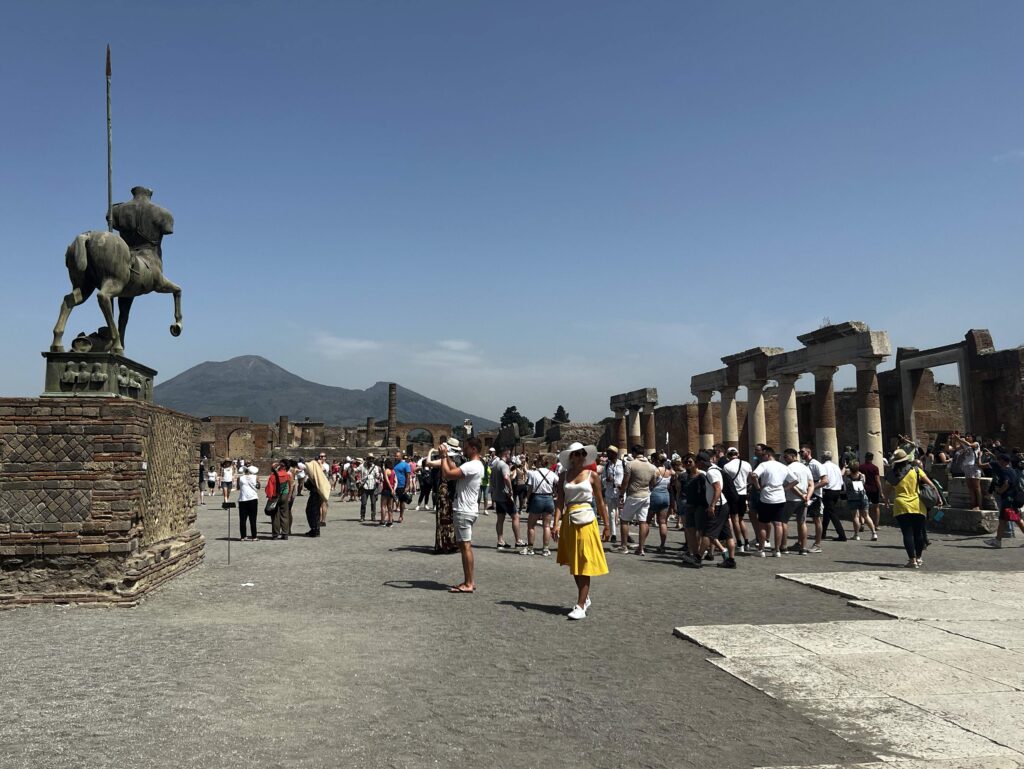
Every first-time visitor in Madrid dutifully hits the tourist hot spots, so I, too, made my way to El Prado with its treasures of the old masters, including Spanish greats Goya, Greco and Velásquez. I also saw the Reina Sofía with its chronology of art since the 1900s; the Thyssen-Bornemisza with its contemporary art collection; the royal palace; refined Retiro Parque, former playground of the aristocracy; and the amazing expanses and greenery of Casa de Campo.

I wandered the winding streets and crowded plazas of el Centro and the various neighborhoods, and dined on everything from garlic shrimp and Manchego cheese to more kinds of olives than I ever thought possible. Highlights for me were the fantastic El Rastro Sunday market with its endless stalls selling everything from Desigual knockoffs to used books, and tapas bars–what a concept! You stop by a bar or restaurant early in the evening (around 8), order a drink, and voilà! The waiter also brings a plate of olives or other appetizer free of charge, meant to tide you over until the dinner hour.
But this wasn’t my first visit to Madrid. It’s just that the first time was so long ago–during Franco’s regime–that I saw it with virgin eyes. So what stands out for me are two impressions that are seemingly contradictions in Madrid in times of austerity. First of all, I was struck by how many people there are working the streets, trying to earn money.

There are musicians playing accordions, guitars, violins. There are opera singers, folk singers, flamenco singers. There are people selling toys, trinkets, pens, jewelry, offered to passersby or laid out on blankets on the ground. There are magicians, reciters of poetry, people dressed in bizarre costumes. And then there are simply beggars asking for money.
Unemployment in Spain now exceeds 25%. Although Germany and the rest of the EU demand stricter austerity measures in return for a bailout, most Spaniards already feel that cuts to their livelihood have far exceeded tolerance, that government has mismanaged virtually everything, and that lowering the minimum wage or unemployment benefits would bring riots to the streets. And then, of course, there’s Catalonia, whose desire for separatism has only grown stronger.
An employee of Círculo de Bellas Artes, a cultural center in Madrid with a wide-ranging program of exhibitions, cinema, theater and music, told me that his office had been told to cut the budget 70%, which makes you wonder what would be left except for a skeletal shell, yet the center had just put out a magazine with thick expensive paper stock and glossy photographs.

Which brings me to my second impression: shoe stores. I have never seen a city with more shoe stores, though perhaps the area where I am staying, Calle de Fuencarral and Chueca, is the shoe capital of the capital. Does Spain have a shoe fetish? Who is buying all these shoes in Madrid in times of austerity and such high unemployment?
Tourism accounts for one-tenth of Spain’s economy, and I’m amazed to find them seemingly everywhere, even in October, bolstering the economy, visiting museums, eating tapas and gambas, handing out coins to street buskers, and buying, perhaps, all those shoes.
Beggars and a plethora of shoes. Somehow that seems to explain Spain in a nutshell.





